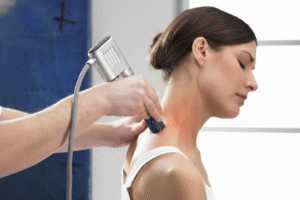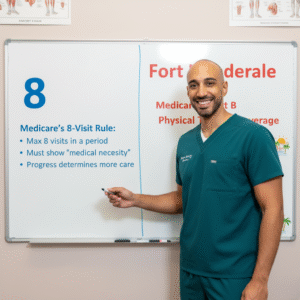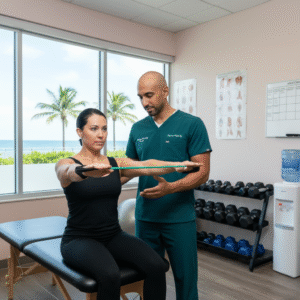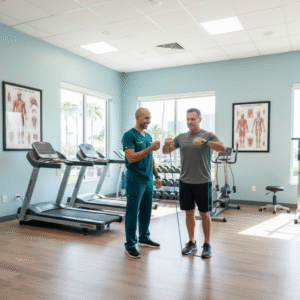Rotator cuff injuries are among the most common causes of shoulder pain and discomfort. The rotator cuff is a group of muscles and tendons that provide stability and allow movement in the shoulder. When these muscles or tendons become damaged or torn, it can lead to significant pain and limited mobility. Whether you’ve experienced a partial tear, full tear, or tendonitis, proper rehabilitation is essential for regaining function and relieving pain. In this article, we will explore the top rehabilitation techniques for rotator cuff shoulder injuries to help you heal effectively.
1. Rest and Ice Therapy
The first step in managing a rotator cuff injury is to reduce inflammation and pain. Rest is crucial to allow the injured tendons to heal, but it should be balanced with gentle movement to avoid stiffness. Ice therapy is an effective method for managing pain and inflammation during the initial recovery period. Applying an ice pack wrapped in a towel for 15-20 minutes several times a day can significantly reduce swelling and provide relief from acute pain.
Resting the shoulder during the early stages of recovery will prevent further irritation of the tendons and promote healing. However, rest doesn’t mean complete inactivity. Gentle movements and stretches will help maintain flexibility and range of motion without putting too much strain on the shoulder.
2. Physical Therapy Exercises
Physical therapy is a cornerstone of rotator cuff rehabilitation. A well-designed exercise program helps strengthen the muscles around the shoulder and improves flexibility, reducing the risk of further injury. Some of the most effective physical therapy exercises for rotator cuff injuries include:
- Pendulum Swings: This exercise involves letting your arm hang loosely while gently swinging it forward, backward, and in circles. This movement helps improve the range of motion and alleviate stiffness.
- Isometric Exercises: These exercises involve gently contracting the muscles around the shoulder without moving the joint. For example, you can press the back of your hand against a wall without moving your arm. Isometric exercises help strengthen the rotator cuff muscles without putting excessive strain on them.
- Rotator Cuff Strengthening Exercises: Resistance band exercises, such as external rotations, are specifically designed to target the rotator cuff muscles. These exercises help restore strength and improve stability in the shoulder joint.
- Shoulder Blade Squeeze: This exercise targets the muscles around the shoulder blades, which are important for stabilizing the shoulder. Sit or stand with your shoulders relaxed, then squeeze your shoulder blades together and hold for a few seconds before releasing.
Working with a physical therapist ensures that exercises are tailored to your specific injury and recovery goals.
3. Stretching and Mobility Work
Once the acute pain and inflammation have subsided, it’s essential to focus on restoring mobility and flexibility in the shoulder. Stretching and mobility exercises are key to preventing stiffness and improving overall function. Some effective stretches include:
- Sleeper Stretch: Lie on your side with the injured shoulder down. With your elbow bent at a 90-degree angle, gently push your arm down towards the floor to stretch the posterior shoulder capsule.
- Cross-Body Stretch: Bring your injured arm across your body at shoulder height and use your opposite hand to gently pull the arm further across. This helps stretch the muscles and tendons around the shoulder.
- Doorway Stretch: Stand in a doorway with your arms at a 90-degree angle, and gently lean forward to stretch the chest and shoulders. This stretch helps open up the chest and maintain proper shoulder posture.
Stretching should be done slowly and gently, avoiding any sharp pain. Consistent stretching will improve flexibility, reduce tightness, and contribute to overall shoulder mobility.
4. Heat Therapy
Heat therapy can be beneficial in the later stages of rotator cuff rehabilitation, particularly when the focus shifts from reducing inflammation to increasing blood flow and promoting muscle relaxation. Applying heat to the shoulder can help relax tight muscles and improve circulation, which is essential for the healing process.
Use a warm compress or heating pad on the shoulder for 15-20 minutes to help relieve muscle tension and stiffness. Heat therapy should be used only when the acute pain and swelling have subsided, as it can worsen inflammation during the initial recovery phase.
5. Progressive Load and Strength Training
As your rotator cuff injury heals and you regain strength, it’s important to progressively load the shoulder muscles to restore full function. Gradual resistance training helps rebuild strength and endurance in the rotator cuff muscles, which are essential for shoulder stability during daily activities and sports.
Begin with low resistance exercises and gradually increase the load as your muscles become stronger. Some effective strengthening exercises include:
- Dumbbell Lateral Raises: Holding a light dumbbell in each hand, raise your arms out to the sides until they are parallel to the floor. This exercise helps strengthen the deltoid muscles, which work in conjunction with the rotator cuff.
- Shoulder Presses: Using light weights, press your arms overhead to strengthen the upper shoulder muscles and improve shoulder stability.
- Front Raises: This exercise targets the front of the shoulder, which is vital for overall shoulder strength and stability.
It’s essential to perform strength training exercises under the guidance of a physical therapist to ensure proper form and avoid overloading the shoulder.
6. Surgical Intervention (When Necessary)
In cases of severe rotator cuff tears that do not respond to conservative treatments like physical therapy, surgery may be required. Surgical options for rotator cuff repairs include:
- Arthroscopic Surgery: This minimally invasive procedure involves small incisions and the use of a camera to repair the damaged tendon.
- Open Surgery: In cases of large or complex tears, open surgery may be necessary to repair the rotator cuff.
After surgery, a structured rehabilitation program is crucial for a full recovery, including gentle strengthening exercises and a gradual return to activity.
Conclusion
Rehabilitating a rotator cuff shoulder injury requires patience, consistency, and a well-rounded approach. From rest and ice therapy to strengthening exercises and mobility work, each step in the recovery process plays a critical role in restoring shoulder function. Working with a physical therapist ensures that your rehabilitation program is personalized and effective. By following these rehab techniques and being mindful of your body’s needs, you can regain strength and mobility in your shoulder and prevent future injuries.






